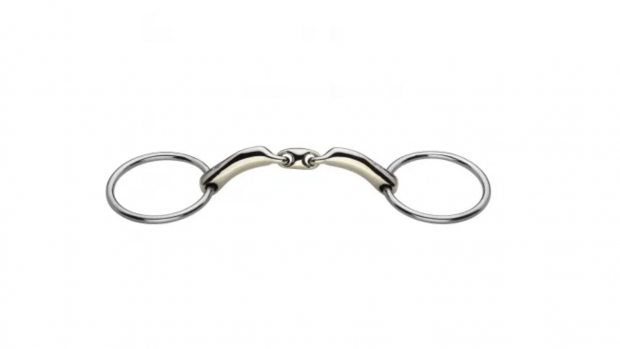THE Wilson snaffle is traditionally used in the driving world, particularly for tradesman’s turnouts, but it is becoming increasingly popular for ridden horses. We find out why.
Who uses it?
SHOW jumper Tim Gredley uses the Wilson snaffle on his grade A gelding Nulisina, both for training at home and competition.
Leading show producer Robert Oliver uses the bit for show preparation at home.
How does it differ to normal snaffle bits?
THE Wilson snaffle has four loose rings — two attached to each end of the mouthpiece, with two additional “inside” rings. The cheek pieces of the bridle are fitted to the inside rings, while the reins are fitted to the outside two.
The bit can be bought with jointed, straight or twisted mouthpieces.
Why do non-drivers use this bit?
“NULISINA often gets his head in the air and goes very strong into fences at shows,” explains Tim. “I tried lots of bits on him and found that he settled most in the Wilson snaffle. Although
it’s not a complex bit, it gives me much more control and helps me set him up into
his fences.”
Robert Oliver uses the Wilson snaffle as a schooling aid.
“A show horse has to be light, supple and balanced as he turns, and I find the Wilson excellent for such preparation, as horses go very kindly in it,” he says.
Is it severe?
ACCORDING to Robert Oliver, the Wilson bit, like most, is “fine in the hands of a good horseman”.
The bit works with a squeezing action on the cheeks rather than on the corners of the mouth. The Wilson can give superb control and “turning power” for a hard-pulling horse, while not being overly severe.
How do I get one?
The Wilson snaffle is available from leading tack shops, and costs from £12.99.
This Q&A was first published in Horse & Hound (8 February, ’07)



